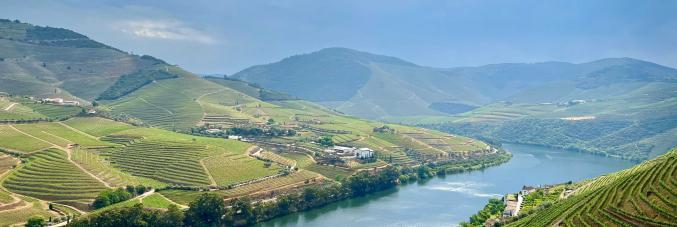
Heroic viticulture: challenges of unique heritage landscapes
19.07.2023
Photo of the Alto Douro Wine Region UNESCO Heritage Site located in north-eastern Portugal by Paolo Tarolli
Heroic viticulture encompasses a virtuous intertwining between the territory and those who live up it, cultivating it, and extracting its fruits. Europe is home to numerous examples of heroic viticulture, including the vines that produce Port in Portugal found upon the rugged slopes bathed by the Douro River, or the vineyards along the Prosecco Hills of Valdobbiadene and the remote islands of Pantelleria in Italy. This delicate balance is now at risk, due to climate change, and the constantly evolving socio economic conditions of our society.
There is a fine thread that weaves together micro-worlds dedicated to heroic viticulture that hold common values and challenges. Such as those discussed in the article Heroic viticulture: Environmental and socioeconomic challenges of unique heritage landscapes published in iScience by the research group led by Professor Paolo Tarolli of Department of Land, Environment, Agriculture and Forestry (TESAF) at the University of Padua.
Prof Tarolli explains, “Defined by CERVIM, Heroic viticulture are vineyards planted on terraces or embankments along slopes greater than 30%, at an altitude of over 500m, or on small islands that offer exceptional historical and cultural value. These lands represent an enduring link between difficult environmental conditions and the tenacity of winemakers carried out over centuries of tradition while respecting the cultural roots of local communities.”
Fellow researcher at Padua’s TESAF comments, “In terms of climate, there are two main challenges within the hydrological cycle of these areas, extreme rainfall and drought. On one hand, intense rain can cause severe erosion that triggers landslides while the continuation of severe drought (as witnessed in 2022) creates major problems in terms of water management.
We must intervene to ensure better and more sustainable management of the water resource, including the installation of micro-reservoirs that activate in the event of extreme precipitation (lamination of runoff and flood mitigation) or lack of water (reuse of rainwater collected for emergency irrigation).
To better understand the problems and to create mitigation solutions, the study highlights the importance of opening a dialogue between scientists, farms, trade associations, local authorities, consumers and political decision-makers. Hence the importance of educating a new generation on such issues. Not by just rediscovering the past, but by looking to the future. It all lies in knowing that "education as an essential tool for the survival of cultural landscapes." Stressing that "the key to success lies in combining the traditional knowledge of winegrowers with innovation and scientific rigor. In this way, farms can optimize investments for a more functional, sustainable and safe agricultural landscape, creating an alliance to tackle various natural and anthropic challenges."



